The shoulder joint actually is comprised of many joints:
--Gleno-Humeral joint (round part at top of humerus (arm bone) contacting the socket (glenoid) of shoulder blade)
--Acromioclavicular (AC) joint (attachment of collarbone to part of the shoulder blade called the Acromion)
--Scapulothoracic region (refers to the shoulder blade rotating on the back side of the chest wall)
--Sternoclavicular joint (not pictured, where the end of the collarbone towards the midline attaches to the sternum/breastbone)
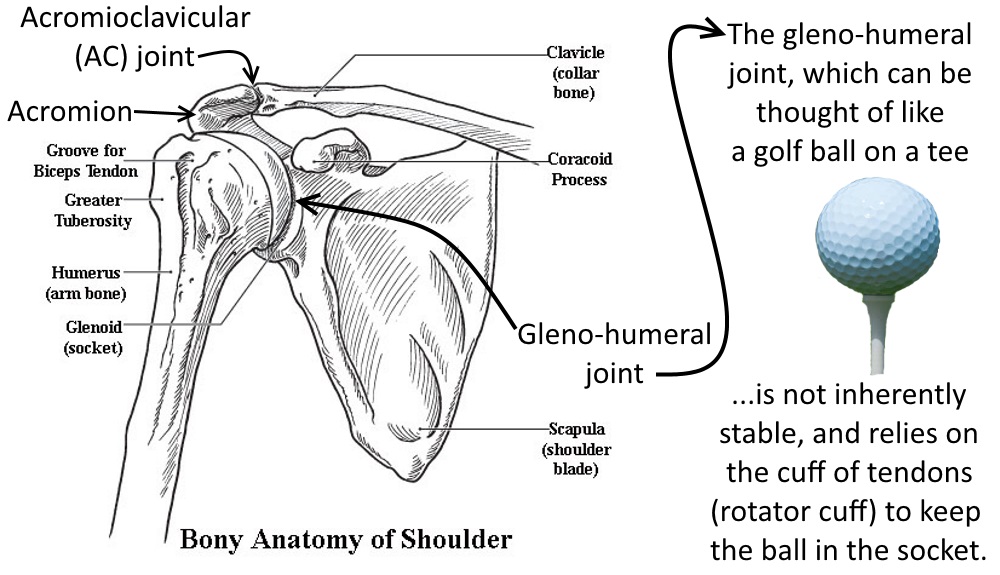
Stability of the gleno-humeral joint requires a cuff of muscles (the rotator cuff) to hold the joint in place. (Below are some anatomical illustrations borrowed from ortho.hyperguides.com):
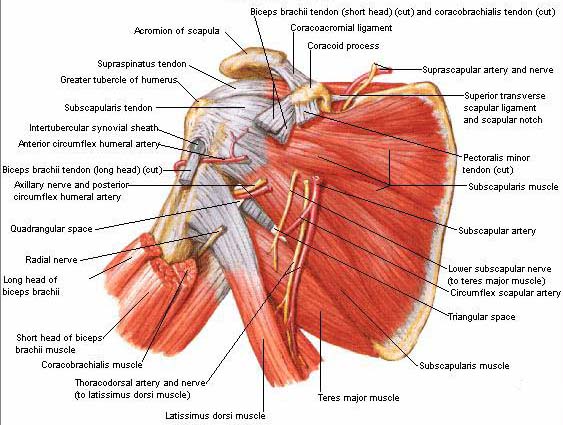
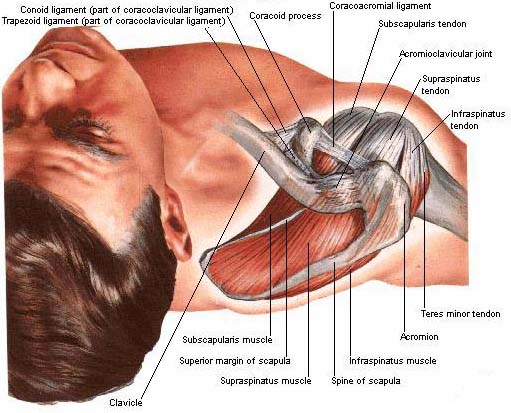
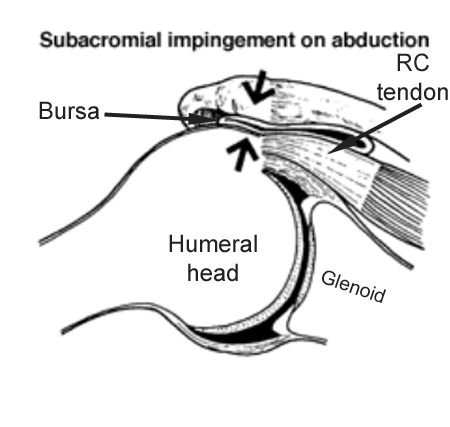
Sometimes when the rotator cuff tendons can be either rubbed by the underside of the acromion (part of the scapula), rotator cuff tendonitis can occur. This condition is also referred to as impingement syndrome, as the tendons are impinged between the bones.
When the rotator cuff tendons are rubbed more, a tear can occur, causing rotator cuff tendonitis. Most patients with partial tears, and sometimes even those with complete tears, cannot recall any specific trauma to their shoulder. These tears can occur more as a gradual process since the parts of the rotator cuff tendons, where they insert into the bone, are areas of relatively poor blood supply, and heal very slowly after any trauma or degenerative process.


Frozen shoulder (adhesive capsulitis) is a condition where the ball gets stuck to the joint, thereby making the patient rely more on the other parts of the shoulder joint for any motions, like the shoulder blade moving against the chest. This condition is usually treated by aggressive therapy and takes many months to get better.
Shoulder Exercises
For some information on shoulder exercises you can do on your own, some simple ones are illustrated below.
Unlike the hip joint, which as a deep socket for the ball shape at the end of the thigh bone to fit into the pelvis, the shoulder relies on the surrounding muscles, referred to as the rotator cuff, to keep the ball in a relatively shallow socket. This cuff of muscles, as shown above, as muscles on the front, top, and back of the shoulder joint. Often, relief of tendonitis symptoms can be achieved through a program combining strengthening and stretching.
Strengthening
For each of these exercises, you could use a 1-2 pound weight, or a can of soup would suffice. Each of these exercises can be done with 20 repetitions per set, 2 sets per session, and 2 sessions per day. If this regimen seems too easy, you could either do more of them, or increase the weight. For these strengthening exercises, you should do them in a range of motion that is relatively comfortable.
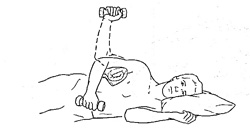
For strengthening the back part of the cuff, rotate the weight away from the body, external rotation.
For strengthening the front part of the cuff, rotate the weight towards the body, internal rotation.
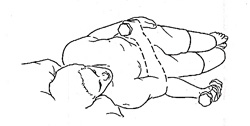
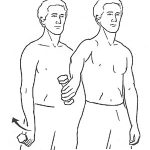
To strengthen the top part of the rotator cuff, the supraspinatus muscle, the one most commonly involved, you can pretend the weight is a can of soda and you are pouring it out. In that position, you can elevate your arms toward the ceiling. However, draw an imaginary line at your shoulder level, and don’t let your elbow rise above that line, as doing so could aggravate your tendonitis.
Stretching
Stretching is helpful to make sure your shoulder doesn’t become too stiff. For the stretches noted here, when you get to the point where the shoulder feels tight, hold that stretch for 10-15 seconds, then relax. Repeat the stretch 5 times per session, for 2 sessions per day.
Forward flexion: you can stretch both facing the wall and with the side of your body towards the wall. You can allow your hand to slide up the wall and feel the stretch as you take small steps toward the wall. in a forward direction by letting your arm slide up a wall as you take small steps toward the wall. You can also do the stretch by letting havi

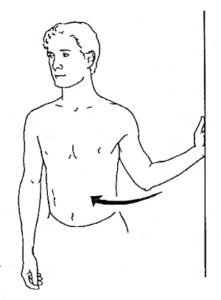
External rotation: you can stretch the muscles in the front of the shoulder joint by holding your hand on a place on a wall, or you could use a doorknob, and rotate your body away from the wall. You will feel the stretch in the front of your shoulder.
Internal rotation: you can stretch the muscles in the back of the shoulder joint by rotating the forearm towards the body. Since the body is in the way of this motion, the stretch can be continued by trying to bring the hand on the affected side up along the spine. A patient with limited internal rotation can barely get their hand to their hip, but as internal rotation increases, the patient can bring their affected hand higher along the spine, up to the area between the shoulder blades. Use a towel, and the good arm can be used to stretch the affected arm.

It is also helpful to do some gentle motions before your exercises to warm up, and apply an ice pack when you are done for a cool down.
